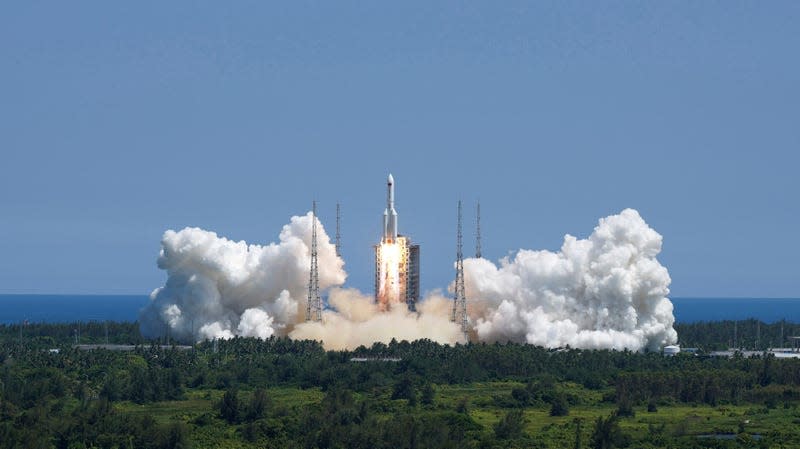China's Spaceplane Conducted Multiple Maneuvers With a Mystery Object in Orbit

The Chinese spaceplane finally returned to Earth earlier this week, but we’re still learning more about its time in orbit. The spacecraft caught and released an unidentified object several times during its flight, performing a series of maneuvers that were captured by orbital radars, according to California-based LeoLabs. The company released its observational data, saying in a tweet that the data shows there were at least two capture and docking operations performed by the spacecraft.
The experimental launch vehicle took off from the Jiuquan Launch Center on August 5 as a classified payload on board a Long March 2F carrier rocket. This was the reusable spacecraft’s second time to fly, with its first launch taking place in 2020. The spaceplane only stayed in orbit for four days during its inaugural flight but far outdid itself the second time around.
Read more
These Winning Close-Up Photos Show Life That's Often Overlooked
Remembering Enterprise: The Test Shuttle That Never Flew to Space
The spaceplane landed on May 8 after spending 276 days in orbit. The China Academy of Launch Vehicle Technology, a state-owned manufacturer that makes both civilian and military space launch vehicles, shared very little information about its craft. Observers of low Earth orbit, however, were able to track the spaceplane’s activities during its lengthy flight.
In November 2022, the U.S. Space Force’s 18th Space Defense Squadron tracked an object that may have been ejected from the spaceplane. The object remained unidentified, although some speculated it may have been a satellite used to track the spaceplane’s performance in orbit.
That same object may be what LeoLabs tracked with its global network of radars. “Since its launch on 4 August 2022, we observed multiple large maneuvers raising the object’s altitude — as well as repeated deployments, formation flying, and docking of a sub-satellite Object J (NORAD ID 54218),” the company said in its Twitter thread.
“We’ve determined that the Test Spacecraft2 has propulsive capability and engaged in proximity operations with Object J, including what appeared to be at least two and possibly three capture/docking operations,” LeoLabs added.
LeoLabs also noted that, prior to its landing, there were earlier indications that the spaceplane was lowering its altitude. The company recorded several smaller maneuvers between April 13 and May 8, including a drop in altitude by 155 miles (250 kilometers). Shortly after it launched, the spaceplane stayed at an orbit of about 215 miles to 369 miles (346 kilometers to 593 kilometers) inclined at 50 degrees above the equator.
China’s experimental vehicle operates like a regular aircraft in Earth’s atmosphere and a spacecraft in space, allowing it to complete missions in orbit and then return to Earth’s surface, where it performs a horizontal landing. China isn’t the only country testing this type of spacecraft; the U.S. Space Force has its own spaceplane. The Boeing X-37 launched in May 2020 for its sixth test flight and landed back on Earth in November 2022 after spending more than two years in orbit.
The operations of both these spaceplanes are kept under wraps, but fortunately low Earth orbit is always being watched.
For more spaceflight in your life, follow us on Twitter and bookmark Gizmodo’s dedicated Spaceflight page.
More from Gizmodo
Sign up for Gizmodo's Newsletter. For the latest news, Facebook, Twitter and Instagram.
